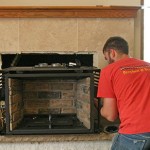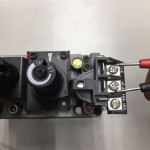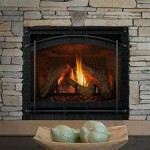Gold Fireplace Screen Makeover: A Comprehensive Guide
A fireplace screen serves as a crucial safety barrier, preventing sparks and embers from escaping the hearth and potentially causing damage or injury. Over time, however, even the most well-maintained fireplace screen can become dull, outdated, or simply no longer complement the aesthetic of a living space. A gold fireplace screen makeover offers an opportunity to revitalize this essential element, breathing new life into the fireplace area and enhancing the overall ambiance of a room. This article provides a comprehensive guide to undertaking a gold fireplace screen makeover, covering preparation, painting techniques, and finishing touches.
Assessing the Condition of the Existing Screen
Before beginning the makeover process, a thorough assessment of the fireplace screen's condition is paramount. This involves carefully inspecting the screen for rust, damage, or excessive build-up of soot and creosote. Rust, if present, will require removal and treatment to ensure a durable and long-lasting finish. Damage, such as bent or broken mesh, may necessitate repair or replacement of individual components. The accumulation of soot and creosote, byproducts of combustion, can hinder paint adhesion and compromise the final appearance. Understanding the extent of these issues informs the necessary preparatory steps and material selection.
The type of metal used in the screen's construction also influences the selection of appropriate paints and primers. Common materials include wrought iron, steel, and brass. Wrought iron and steel are susceptible to rust and require primers formulated for ferrous metals. Brass, while generally more resistant to corrosion, may require specific primers to ensure proper paint adhesion. Identifying the metal type allows for the selection of products that are chemically compatible and provide optimal performance.
Consider the existing finish of the screen. Is it a powder coating, a painted surface, or bare metal? This will determine the level of surface preparation required. Powder-coated surfaces are generally durable but may require sanding to create a suitable profile for paint adhesion. Painted surfaces may need to be stripped if the existing paint is peeling or heavily damaged. Bare metal surfaces require thorough cleaning and priming to prevent rust formation and ensure proper paint adhesion.
Preparing the Fireplace Screen for Painting
Proper preparation is critical to achieving a professional-looking and durable gold finish. This stage involves cleaning, rust removal (if necessary), sanding, and priming. Skipping or inadequately performing these steps can lead to poor paint adhesion, premature chipping, and an unsatisfactory final result.
The initial step is a thorough cleaning. A solution of warm water and mild detergent is effective for removing surface dirt, dust, and grease. For heavier deposits of soot and creosote, a specialized fireplace cleaner may be required. After cleaning, rinse the screen thoroughly with clean water and allow it to dry completely. Avoid using abrasive cleaners or scouring pads, as these can scratch the surface and create an uneven texture.
If rust is present, it must be removed before proceeding. Small areas of rust can be addressed with a wire brush or sandpaper. For more extensive rust, a chemical rust remover may be necessary. Always follow the manufacturer's instructions when using chemical rust removers, and ensure adequate ventilation. After removing the rust, thoroughly clean the affected area to remove any residue from the rust remover.
Sanding the surface creates a profile for the primer and paint to adhere to. Use a medium-grit sandpaper (around 120-180 grit) to lightly sand the entire surface of the screen. Focus on areas where the existing finish is glossy or uneven. Sanding also helps to feather out any edges where the existing paint is chipped or peeling. After sanding, remove all dust with a tack cloth or a damp cloth.
Priming is an essential step, especially when painting metal surfaces. A primer provides a uniform base for the topcoat and promotes adhesion. Select a primer specifically formulated for metal. Apply the primer in thin, even coats, following the manufacturer's instructions. Allow the primer to dry completely before proceeding to the painting stage. Depending on the type of primer used, sanding the primer may be necessary to create an even smoother surface for the gold paint. Use a fine-grit sandpaper (around 220 grit) and lightly sand the primed surface. Remove all dust before applying the gold paint.
Applying the Gold Paint and Finishing Touches
The selection of the gold paint is a crucial decision. Several types of gold paint are available, each with its own characteristics and advantages. Consider using a high-heat resistant paint, especially for areas of the screen closest to the flames. This will prevent the paint from blistering or discoloring due to the heat. Options include spray paint, brush-on paint, and even specialized metal coatings.
Spray paint offers a convenient and efficient way to apply an even coat of paint. Select a spray paint specifically formulated for metal and ensure it is compatible with the primer used. Shake the can thoroughly before use and apply the paint in thin, even coats, holding the can approximately 10-12 inches from the surface. Avoid applying thick coats, as this can lead to runs and drips. Allow each coat to dry completely before applying the next. Multiple thin coats are preferable to a single thick coat. Consider the sheen of the desired finish – matte, satin, or gloss – and select a gold paint that provides the appropriate sheen.
Brush-on paint offers greater control over the application process and is ideal for intricate designs or smaller areas. Use a high-quality brush specifically designed for the type of paint being used. Apply the paint in thin, even strokes, following the grain of the metal (if applicable). Avoid applying too much pressure, as this can create brush marks. Allow each coat to dry completely before applying the next. Multiple thin coats are preferable to a single thick coat. Clean the brush thoroughly after each use to prevent the paint from hardening.
Once the gold paint has dried completely, consider applying a clear coat sealant to protect the finish and enhance its durability. Select a clear coat sealant that is compatible with the gold paint and is designed for use on metal. Apply the sealant in thin, even coats, following the manufacturer's instructions. Allow the sealant to dry completely before placing the screen back in front of the fireplace.
After the paint and sealant have fully cured, the screen may require minor touch-ups. Inspect the screen carefully for any imperfections, such as runs, drips, or areas where the paint is thin. Use a small brush or a cotton swab to apply touch-up paint to these areas. Allow the touch-up paint to dry completely before handling the screen.
Finally, clean the glass or mesh of the screen with a glass cleaner or a mild detergent solution. This will remove any smudges or fingerprints and allow the gold finish to shine through. Once the screen is clean and dry, carefully place it back in front of the fireplace. The revitalized gold finish will not only enhance the aesthetic appeal of the fireplace area but also provide years of reliable service.

Golden Branch Fireplace Screen Makeover Home Decor Design

Gold Fireplace Screen

Fireplace Door Update With Spray Paint Roots Wings Furniture Llc

Gold Fireplace Screen

Gold Fireplace Screen

Enhance Your Home Style With A Antique Gold Fireplace Screen Claire Crowe Collection

Dark Gold Art Deco Style Single Fireplace Screen

How To Paint A Tile Fireplace Makeover With Club Crafted
Bamboo Design Single Panel Fireplace Screen Horchow

Ginkgo Fireplace Screen In Aged Gold Claire Crowe Collection








